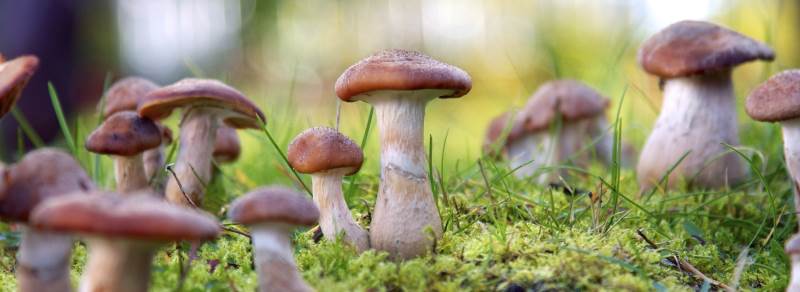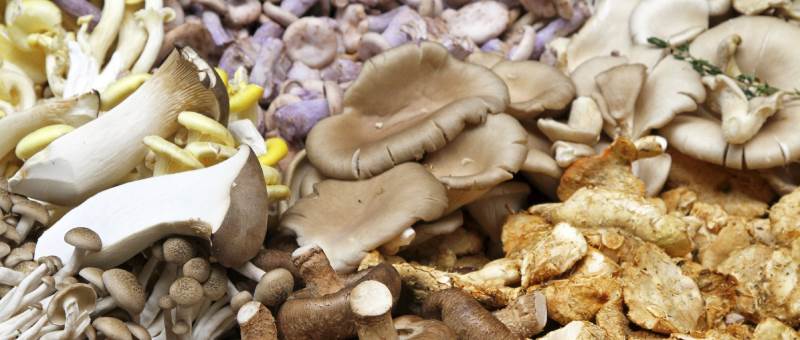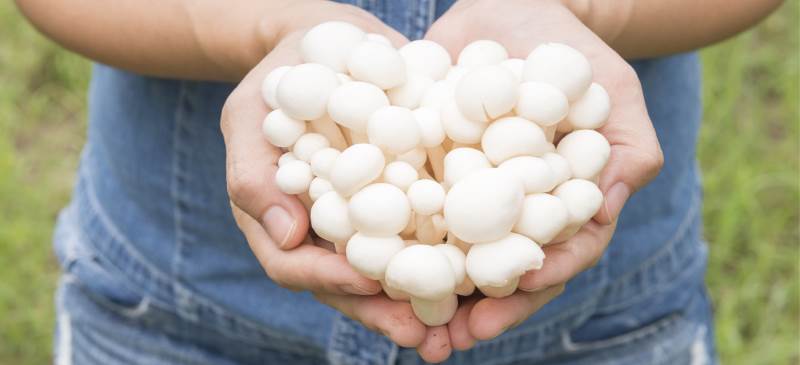An Introduction to Mushrooms
Mushrooms are also known as toadstools. While now most people apply the term ‘mushroom’ to edible fungus and ‘toadstool’ to poisonous fungus, typically in stories or fairy tales, the distinction is not clear-cut, and the terms were used interchangeably until the 1600s. However, as a consensus about application of terms was never reached, ‘mushroom’ can still refer to edible, inedible or poisonous species.

Mushrooms grow from spores which are spread by fully grown mushrooms. First a tangled mess of thread like structures form under the ground or surface on which the mushroom spore has landed. Small buds form out of the thread-like tissue, and grow upwards out of the ground, forming the classic mushroom umbrella shape. Spores are developed on the gills on the underside of the mushroom cap. These spores eventually drop or are carried by the wind, and when they fall on surfaces suitable for growth, new mushrooms can develop.
.
Varieties of Mushrooms

It is estimated that about 15,000 varieties of mushrooms exist in the UK alone, though of course there are far fewer mushrooms which are edible. Mushrooms can be roughly split into four main categories: saprotrophic, mycorrhizal, parasitic and endophytic. These fancy names simply describe the way in which the mushroom feeds.
Saprotrophic mushrooms decompose dead tissue, such as in trees or plants. Many of these mushrooms are edible, including shiitake and white button mushrooms.
Mycorrhizal mushrooms weave around the roots of other plants, providing nutrients to the host plant. This can make them difficult to cultivate, though popular edible varieties include chanterelle mushrooms, and the highly prized truffles.
Parasitic mushrooms also take a plant host, but unlike mycorrhizal mushrooms, eventually destroy its host. Most often, these types of mushrooms are not visible until it has already damaged the plant host. Parasitic mushrooms can also be saprotrophic. The honey fungus is a parasitic mushroom expected to be the largest living organism on earth.
Endophytic mushrooms are the least studied variety of mushrooms. They are also thought to invade a host plant, but not damage it, but unlike mycorrhizal mushrooms are much easier to cultivate.
Nutritional information

Edible mushrooms contain a range of vitamins and minerals, and as well as being high in the B vitamins, they are the only non-fortified source of vitamin D available for vegans.
Additionally, they are also low in sodium, cholesterol and saturated fat.
100g serving:
21 kcal, 3,1g protein, 0.3g fat, 3.3g carbohydrate, 1.0g fibre
Health benefits
Neither meat nor vegetable, mushrooms are nevertheless a great addition to the diet, and are found to have a range of health benefits. In particular, the vitamin D content helps to promote healthy bones. It has been found that mushrooms exposed to light have a higher vitamin D content. It is important that the body receives enough vitamin D, and while this is often received through exposure to the sun, mushrooms are one of the few natural edible sources of this vitamin.
 Research suggests that mushrooms increase the body’s immune defences. They are thought to increase the production of anti-viral proteins and promote the maturation of immune system cells. This helps the body to be more ready and able to fight off invading bugs.
Research suggests that mushrooms increase the body’s immune defences. They are thought to increase the production of anti-viral proteins and promote the maturation of immune system cells. This helps the body to be more ready and able to fight off invading bugs.
Mushrooms are also thought to have cardiovascular benefits, as a result of anti-inflammatory and anti-oxidant effects. They protect the blood vessels from oxygen damage, in particular the aorta, the biggest blood vessel in the heart. It is also though that mushrooms can lower levels of cholesterol in the blood.
Mushroom recipes
Cheesy Stuffed Tomato with Rice & Mushroom
Mushroom Risotto
Potato, Aubergine & Mushroom Curry





 Looking for our products in a store near you?
Looking for our products in a store near you?
